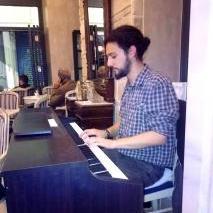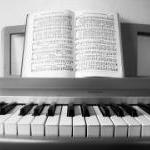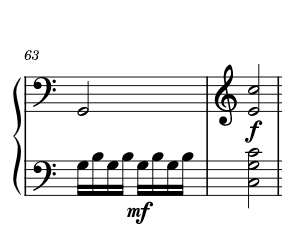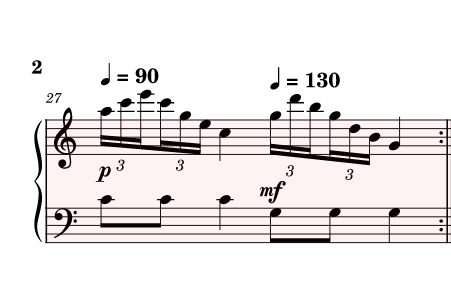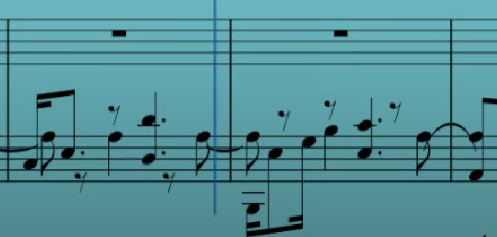Leaderboard
Popular Content
Showing content with the highest reputation on 04/02/2023 in all areas
-
Oh hi again Here's no.6, kind of an ABA form, Eb - Cm - Eb. I wanted to write something conservative this time, keeping the harmony romantic and all. Hope you like it, this one is one of my favorites so far. 😄 The tempo marking probably shouldn't be lento. Any suggestions?2 points
-
2 points
-
Thanks for taking a listen, Omicron! In choral music in the US, piano accompaniments frequently leave out pedal markings and slurs to allow the music to be a printed a little larger, while keeping page turns to a minimum. It just gives you a tiny bit more room on the page. Since I'm not a pianist, it seems wise to take advantage of that convention and let the player decide how best to handle stylistic issues. Measure 40-43 is another peculiarity of choral writing. The small heads indicate that the piano is resting there... probably... When the piano tacets, leaving the singers on their own, it is still helpful to be able to see the choral notes, so that the pianist can easily play along with those parts during rehearsals, or even during the performance, if a decision is made last minute that the choir is having pitch issues when singing alone. You can also leave bars like that empty in a piano or organ part, but having the notes written out means the accompanist doesn't need to shoot their eyes up to the choral parts and read across four staves. Thank your for your thoughts! The two choirs I sing with regularly are both smaller than they were before the pandemic, but both are slowly growing again, thankfully. If we can manage to make the finances work until we get all the way back to normal, we'll be okay, but it's a challenge. You can't perform the big pieces without a big choir, and it's the big pieces that usually sell the most tickets.2 points
-
2 points
-
Hi again, ladies and gentlemen. It's a pleasure to me to make yet another spam post for you to value, comment, and listen. Naturally, I come with my next nocturne, composed during March and finished more than a year ago (already!), on 24 March, 2022. It is dedicated to a close friend of mine, David Lozano Leiva, who is also a musician (guitarist, and amateur composer as me). The traditional nocturnal character of this nocturne is as present as it was on my last one, so yeah, close to none but perhaps a bit more than the 7th of this set. Not my best, neither my worst, but I'll leave that judgement to you. As always, any feedback, opinion, comment, greeting, as meaningful or meaningless as you yourself consider it, is very welcome. I'll leave the video here and the mp3/pdf below. Kind regards to you all and thank you in advance, Daniel–Ømicrón. 55 - Nocturno Nº8.pdf1 point
-
Yo Installment number 4 of my miniseries. Based around G minor/dorian for the most part. Enjoy!1 point
-
1 point
-
Hey everyone, this is a project I did for my Theory: Intro to Harmony class. We started with just a chord progression, then added texture and a melody. I'd love to hear any feedback, and if anyone thinks of a title, please let me know1 point
-
I was going for a grand opera overture. I’m not completely happy with the middle section though. Any thoughts are appreciated.1 point
-
Hi everyone! I have previously posted the second movement of my second Piano Sonata here: Now I am posting the first movement of the work! Here are the pdf and the mp3: Piano Sonata no.2 in A-flat Major First Movement.pdf Piano Sonata no.2 First Movement.mp3 I've also included the YT video here: I didn't introduce the inspiration of this sonata in my post in the second movement to have it here. Piano Sonata no.2 in A-flat major (2015) is composed right after the completion of the first Piano Sonata. It's the quickest composition at all since I had only used 3 weeks to finish the first draft of it.(It's very quick in my standard since well, I can use 6 years to compose my clarinet quintet...) I adopt a freer approach here to contrast with the first Piano Sonata which is very cohesive. Here I really just write what I want and this may result in less tight structure of the overall work. But it's definitely more akin to my emotion and feeling here! I only use 2 days to finish the first draft of this movement in 6-7 May 2015. It begins in a Schubertian manner and several episodes in it, stimulating the later movements and transformed into a Beethovanian one, akin to his op.110 in the same key. I really love how serene this movement begins and motivational at the end! The overall form of the piece can be considered as follow: B.1-32 (00:00-01:18): Main theme, serene and Schubertian in A flat major. Backbone of the piece B.33-81 (01:19-03:16): Secondary theme begins in f minor but confirms the A flat major. Inspire 2nd movement. B.82-98 (03:17-04:00): Doloroso in C sharp minor my favourite key! End of the first part. Inspire 4th movement. B.99-135 (04:01-05:00): Struggling to create power in a Beethovanian manner. B.136-159 (05:01-05:42) Reprise of the opening theme but in Beethovaian manner especially with influence of his op.110 in the same key!!(My favourite Beethovan Sonata too!) B.160-183 (05:43-06:25): Crystallization of the opening theme? Inspire fifth movement esp. its coda. B.184-194 (06:26-06:57): Affirmation of the opening theme though weakened at the end to pave the way to the denial in the second movement. I am very happy to have composed this sonata as I feel like I am free flowing during the process. I also love how the emotions flow within it whether it's serene, hopeful, tragic, agitated or transfigured. I just ignore all those parallel 5ths and 8ves since the sound is great. It may suffer from the lack of coherence though especially in the first movement, but it helps inspire the later movements with the episodes so I am very grateful I make this! The recoding is made in 18/03/2023. There are two obvious slips in 04:06 and 04:12. But the rest of the recording is quite beautiful and faithful to the music so I retain it. Hope you enjoy this as well and thanks for listening!!! P.S The post for the third movement is attached here: The post for the fourth movement is attached here: Henry1 point
-
¿Darle o darte? Hola, no tenemos una sección en Español (ni en otros idiomas) y nos comunicamos mayormente en inglés, espero que no te suponga problema, pero si escribes el post en inglés probablemente sea más sencillo que recibas crítica, opiniones y eso. ¡Bienvenido de todas formas, Alejandro! Ahora paso al inglés. The piece itself is a bit monotonous (no dynamics, limited in range, directionless at times), and the ways it uses to break such monotony likely don't work as intended. I'm referring to the abrupt pauses made that @Henry Ng Tsz Kiu also noticed. While I can more or less notice a certain direction at least in the harmonic field, this is not the case of the melody. But I would say it's in the right direction, so my only advice would be keep composing! Kind regards, Daniel–Ømicrón.1 point
-
Oh good to know, a skilled pianist will definitely put pedals here and there at will yes. It's also good to learn about other uses of small notes I didn't know of. I only knew about their use in cadenzas, ossias, appogiaturas & acciacaturas. I am glad that choirs you are in are slowly recovering and growing, despite the natural issues that can come after such an event. Kind regards!!1 point
-
Hi again HW. A bit late but anyway: for future reference, please post at least the mp3s here since people will not need to abandon the site and open a new tab in order to listen. Various things to comment here: • Do you think the fact this work was composed in an hour is positive? • I agree with Henry on the fact that the work is still quite short for a multi-movement work or a sonata even if it's made up of a single movement. I am not even sure if it's multi-movement'ed by the score, I can just suspect it by the music which is good but I encourage engraving it precisely. • Despite I am aware terraced dynamics were possible by Harpsichords in certain ways, I'm not really sure if they can do fortepianos the usual way one would do in a piano nowadays, nor things like these: . • Apart from that, I would discourage the use of precise changes in tempo like these . While for machines it indeed makes plenty of sense, it might not be the case for real human performers, which may get a much better sounding and understanding on the piece when using approximate tempo markings accompanied by character words. That's all for now. Kind regards, Daniel–Ømicrón.1 point
-
I made this composition thinking of a small village in the snow, and I tried to give it some winter feelings. This is my first piece where the time signature change during the song (it goes from 3/4 to 4/4 and then returns to 3/4 quite often), and also my first one with a modulation in it. I Hope you enjoy it! 🙂 The_Bells_In_The_Snow.mp31 point
-
Quite nice short themes! I would agree with Henry on my choice as the favourite one. I didn't feel the second one as specially brief. The third one featured very nicely crafted crescendos, while I would agree on the fourth one's briefness. Perhaps this final one —though I guess the order is not relevant— convinced me the least despite enjoying all of them a lot. It might be because under my perspective you nailed the endings on the first three (original, prepared enough) while the fourth one, again, could have benefited of a little more development and preparation. All in all, I repeat, these are quite nice short themes that make a very good use of the instruments brought to action, specially of the clarinet. Kind regards, Daniel–Ømicrón.1 point
-
That's a very sane practice. I am barely able to compose on a daily basis but when I do, it's usually in bursts of 10-15 hours which isn't sane at all. I am glad some of my criticism is worth of your consideration mate, looking forward to check further works from you, specially if those are already finished. Kind regards, Daniel–Ømicrón.1 point
-
1 point
-
♫ Ballade: • OK, first of all the piano sound you have chosen is a bit weird to me, specially the for lowest notes —which sound almost like an electronic bass—. Concerning the playability of some parts and without and in-depth analysis, I would say that Henry's comment is accurate in the way some parts would definitely need pedalling but that may have unwanted consequences in the sound during a real performance. But well we have some "playable" parts too that seem to be intendedly hand-breaking, haha: • The piece itself improves with time in my opinion, from a no-go to me in the beginning to very fascinating rhythmical motives at the end. So in my opinion, you have a potentially good piece there but it needs polishing and more directionality (in case you think this is what you seek for) in some parts. Engraving issues are also a thing to mention and we don't have to dive too much to see some stuff like this where stems direction to indicate voices isn't clear and some silences are either unneeded or can be better aligned (or even compressed). I do encourage you to use 8va bassa and alta —or even change the clef— whenever you see that most of the stuff you put on a section happens to be located off the staff. • Another question regarding the engraving: what do these double bars mark? (e.g: end of M33). • Since this is a personal choice I won't really criticize it but seeing that this piece has lots of beamed notes changing the time signature might be worth considering, but that's just a detail, it's not like there's lots of pieces with much, much more beam density out there! ♫ Syncopation: • I would say that the beginning was a little weak to my taste but just as it happened with the Ballade, it does improve with time. Why are there notes in red BTW? • I would say that I liked this piece more than the Ballade overall. It's more simple yet (or as a consequence of that) the melody flows easily. Again you don't lose opportunity to try some rhythmic variations on the theme —those tenths in the piano are killing though—, but these are the only noticeable variations. There's barely to no dynamics, and the more the piece advances, the less meaningful the initial motive is. I believe the climax and my favourite part was reached before starting these rhythmic variations that despite telling me there's ambition in this piece, it is just not well executed in my opinion. The ending didn't convince me either, it was too abrupt; the momentum you created with the ostinato went nowhere. • All in all, I liked it more than the Ballade, specially the "build-up" part before the rhythmical variations came. ♫ Quartet: • The title says "2 hour composition". What does it mean? That the full piece lasts 2 hours or that it took you 2 hours to compose it? • Yet again, the very first bars were not so convincing, but after that there's a truly enjoyable section that lasts till 1:40 aprox, where (too) suddenly a more peculiar section, featuring a more rhythmical approach appears, and while it stands a bit better than the other two at the beginning, it ends into a mess where the piano squashes and gets rid of what was left of the very nice melody and balance that you made at the beginning of the piece. And yet again, the ending doesn't make justice to the momentum you questionably created out of the nothingness. • Engraving "issues" like uncompressed silences are present, but much less than in the Ballade. In summary, none of this three pieces you presented convinced me. In my honest and humble opinion, all of them followed the same pattern: A weak beginning, continued by a very promising section that at some point suddenly transitioned to a higher or lower degree of chaos, showing in not the most desirable way that the ambitions of these pieces. Working on dynamics and phrasing, as well as being more careful on not hindering readability of the scores will probably be of great help towards unlocking the full potential of the pieces you brought here, and carefully choosing which ideas fit better (and where) is something that one should not forget, too. In my opinion, you create nice rhythms and other interesting combinations but there are better ways to introduce them without making your works extremely difficult or by doing so in a sudden, without preparation, etc. Hope I've not been to dense and that something I have written is of use to you. Kind regards, Daniel–Ømicrón.1 point
-
Hi, Henry! I will try to be brief. • M1-32, very nice and solid exposition which doesn't get boring nor uninteresting to me despite of its tempo. Particularly the very last bars of this section were my favourite and those which gave it the final touch of solidness it needed. • After M32, the almost immediate next motive I heard in and that you later repeated is very similar to one made by Beethoven, not in op.110 but in his 8th sonata. However, you resolve it in C, and take a different direction. Very nice too. • The few last bars preceding the più mosso part sound VERY Spanish to me —for obvious reasons—, haha. Some other parts inside the aforementioned section do give me that vibe too, but M90-99 have more prominence than the others. There's not much criticism to make here, almost every complain would be about the recording device more like about the piece itself... Perhaps the 32nd notes + the recording device made the piece a bit too dense to my taste in some parts. Finally, the way you reach the coda and the way you perform it is 10/10 to me. Congratulations, Henry. Kind regards, Daniel–Ømicrón.1 point
-
Very sad to hear this. I hope situation comes back to normal in the following years. Regarding the piano part, as Henry said there's nothing particularly wrong with it, though I'm sure certain parts will benefit of pedalling or slurs, specially the ones that seem to be "floating" due to the absence of left hand (M22-23 for example). I am also not sure of how dense it may sound in a real interpretation, specially sections like M44-47. Why is the interval M40-43 using small heads in the piano part? I would be glad to listen to the real interpretation of this piece, since the placeholder instruments used for the choir don't make justice to it. Kind regards, Daniel–Ømicrón.1 point
-
This is a problem in that overtures are often written after or along with an opera as (in classical/romantic opera at least) they present themes that will occur in the opera itself. If they don't they have to be truly engaging in anticipation of what's to come. They could set a mood frinstance. It would have helped if BipolarComposer told us what the opera was about. In its way it's a nice piece but lacks cohesion.* Thematic material is blurred by polyphonic lines; there are moments of stillness e.g. it seems to stall at 2'10" then meanders on with nothing of consequence until well into the 2'30"s. The sudden "outburst" at 4'06" brought in a baleful episode that came over, like the opening at 0'07", rather dense - but dropped back again at 4'44" when it suddenly came to life. I felt the ending starting roughly at 5'30" came on too strong too early so it wasn't a build-up to any climax. It needs to start quieter (like Ravel does in his Bolero, so by the time he gets to the climax he can just let rip into the final chords). What's difficult about reviewing this piece is whether it's intended to mimic a realistic live performance or is the composer happy with the balance as it is, as a recorded work? As the former there are a few production issues to look at. As the latter, it's an achievement, but to me personally it's a little turgid. I stress that's just my personal view. If you're happy with the work, fine. However, it does have terrific potential if thinned out a bit; scrap unnecessary polyphonic lines where the density is greatest (maybe present the tunes with greater clarity, separately) and review some of the brass writing. A score would have been useful. Is there one? *It's all right. I'm an expert at composing music that just wanders about aimlessly. .1 point
-
Hi Alex, The second movement is quite cool actually as you use simple chord changes with interesting rhythmic change! For sure dynamic markings can be added. Also I think the movement can be easily arranged to be playes by one piano player only instead of for two pianos. Again it's quite prelude like for me. Thanks for sharing! Henry1 point
-
Hi @BipolarComposer, I really don't have many to add: I agree with Rich and Peter on the energy and lack of direction of the piece. I think some melodic and rhythmic hooks will certainly make the overture more recognizable! Thanks for sharing! Henry1 point
-
Hi @Nazariy, Even though they are 4 independent pieces I think they can be considered one set like Schubert's set of impromptus! You display great technique for having great exchange between the two instruments. The register of the clarinet is fully explored and the varying of mood fit the clarinet well! My favourite one the first with its playful mood. I feel like the 2nd and 4th piece a bit short. The 3rd one is great as well its sacrastic tune and 5/8 time signature. Thanks for sharing! Henry1 point
-
Hi @SisselOnline, I think with the combination only the piano can provide the heaviness with thicker chords, as pianists playing all those note in a Piano Trio.... Guitar for me is near absence with its plucked sound. Is that physical or emotional heaviness? 0:43 is weird for me with the melodic notes. I will further comment with the score! Henry1 point
-
Yeah thanks henry for listening. Unfortunately I agree with you, that it will be incredibly difficult to play that part and voice it properly. But I believe it is doable with enough skill and practice. I have a vision for how it should sound, but real performances tend to change my visions, so hopefully I will make edits in the future to make it sound more proper.1 point
-
I agree with Rich. The ostinati really give the piece lots of motion, drive and energy. But the melodic content seemed unimportant, not providing enough thematic unity or significance. This gave the piece a lack of direction. Also, possibly because of the aforementioned issues, there weren't really any changes in dynamics in the piece - it would have made the piece much more interesting if there was a build or a regression in dynamics somewhere in the piece. Although there is that middle section with reduced instrumentation which kind of serves as a contrasting section and is softer because of the reduced instrumentation. Thanks for sharing!1 point
-
Sounds amazing so far - do you have a score I could look at? Its difficult to figure out some backround parts at times, although you have a lovely contrast between parts!1 point
-
OC-- Gotta agree with Henry--- Even with the 3 minute rule----a suspenseful B section----stripped down, and/or change instrumentation---would serve this piece well. Your handling of the large forces is great, but if I've learned anything this last year--- purposeful VARIETY is key. The main theme is clear, but a somewhat meandering. To paraphrase "Amadeus"--you gotta give the audience a que as to when to clap!!1 point
-
1 point
-
Definitely nailing the vibe. It would be cool especially, orchestrated IMO1 point
-
Hello @Aaron_Bob, Welcome to the forum! If these are your first compostions they are very good attempt! We all begin with impurities in our music and I'm sure my first piece is worse than yours! Great job on these! For both pieces I hear influence of Mozart. Rhythmically they are fluent! If you want tips, I will suggest you to notice the harmonies. Sometimes your melody and accompaniment are not having the same harmony which results in clashes not typical in the classical style you are writing. E.g. in the Allegro b.7, RH melody is playing in B minor while LH in A major, b.11 RH in D major while LH in E major. It's not they are forbidden but I will suggest you keep it simple! Another thing is chord progression and modulation. There are differeny function in chords and chords which are smoother to each other. For example you modulate from A major to E major in the Allegro which are close keys and more natural than the one from E major to G minor, which will be quite abrupt if not prepared well! Voice leading is also important for constructing melody. E.g. the melody from b.15 to 18 will be difficult to follow since the leaps are quite wide and not smooth enough. I really love your attitude! Just keep trying and listening to more music including those from the masters as well as members here! I am sure you will learn from them! Haha you can share more here if you want! I will definiyely check them out! Thanks for sharing and hope you enjoy your stay in YC! Henry1 point
-
Hey guys! I've been working on this piece for the past few weeks. It ended up sounding a bit more sad than I imagined it. I originally intended it to be for Brass Trio (Trumpet, French Horn, and Euphonium or Trombone) but Musescore's Trumpet wouldn't perform anything above a high concert D (or something). I was under the impression that virtuoso trumpet players should be able to play a high concert Eb especially if its approached by stepwise motion. So I switched the instrumentation to Flute, Clarinet, and Bassoon (again) but because of the way I wrote it, it should be possible to perform it with brass instead. The variations in this piece are all subtitled and I tried to follow a kind of rondo form with them: I - Fanfare, II - Minuet, III - March, IV - Waltz, V - Fanfare 2, VI - Minuet 2, VII - Scherzo, VIII - Siciliana, IX - Fugue, X - Lilt. The fanfares would be more fanfare-like if performed by brass (of course). I'm actually not sure if I'm completely done with this theme. I didn't even make use of any inversions, retrogrades or retrograde inversions of the theme in any of my variations. But I felt like the piece was already getting too long so I ended it here. But it would be easy to continue it later on with more variations just starting where I left off. I'd appreciate any of your constructive comments, observations or critiques! Thanks for listening.1 point
-
My ballade dedicated to my sister and brother in law's marriage. and Syncopation in C minor (violin, piano, 2 cellos) Quaret in F# minor called Yebae (Worship). Thamks for lsitening guys. If you want to keep in touch/contact me, it's soloyhk on instagram.0 points
-
3-Flujo-1.mp3 Hola, ¿Como suena? ¿Alguien puede darle consejos? Me recuerda al estilo del Adagio de Albinoni. Gracias0 points

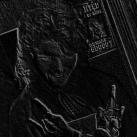


.thumb.png.8b5b433a341551e913a34392660bc95b.png)
